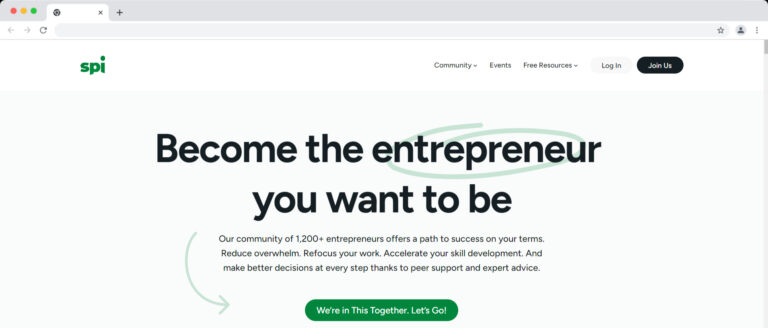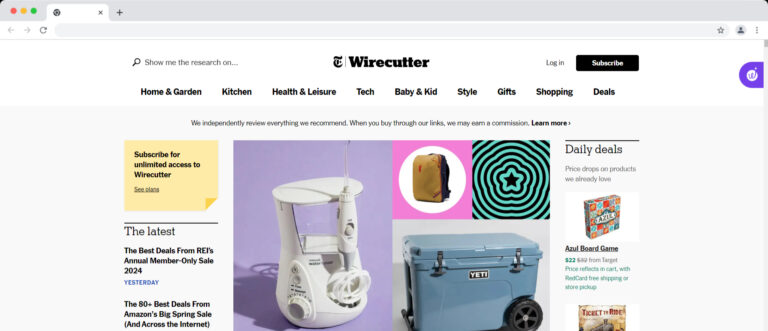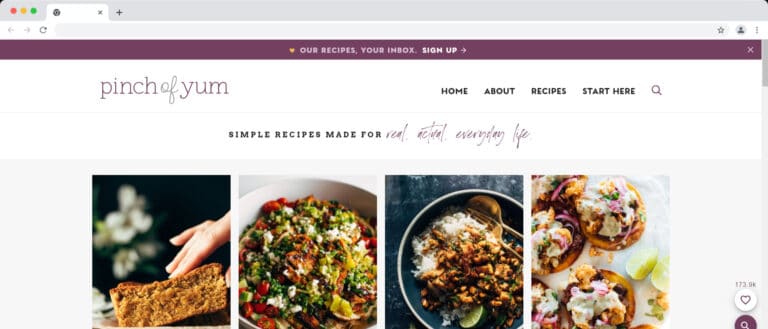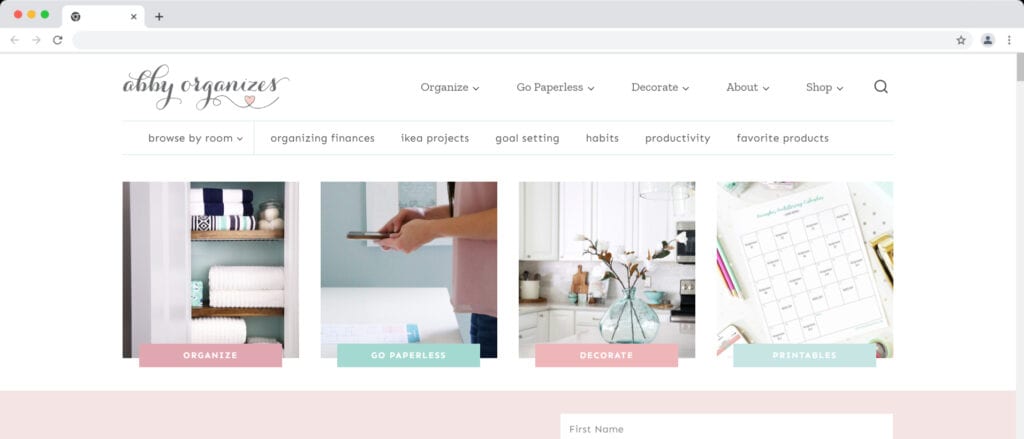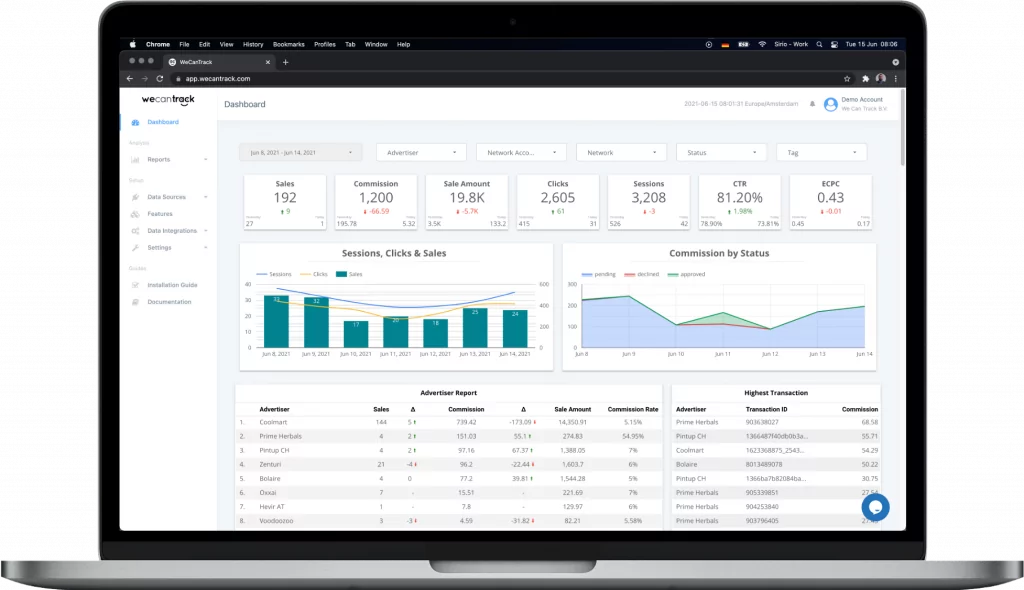Monetizing your WordPress blog can be a great way to earn money from your passion for writing and sharing information with others. With the right approach, you can turn your blog into a profitable business that generates a steady stream of income.
We will also explain how to utilize WordPress plugins to increase revenue and provide tips and tricks for optimizing plugin settings to maximize revenue.
In this article, we will provide an overview of what exactly are WordPress blogs, the steps involved in setting up a successful monetization strategy, and discuss different tactics used to drive traffic and optimize conversions.
How To Monetize A WordPress Blog Overview
Popular Ways To Monetize A WordPress Blog
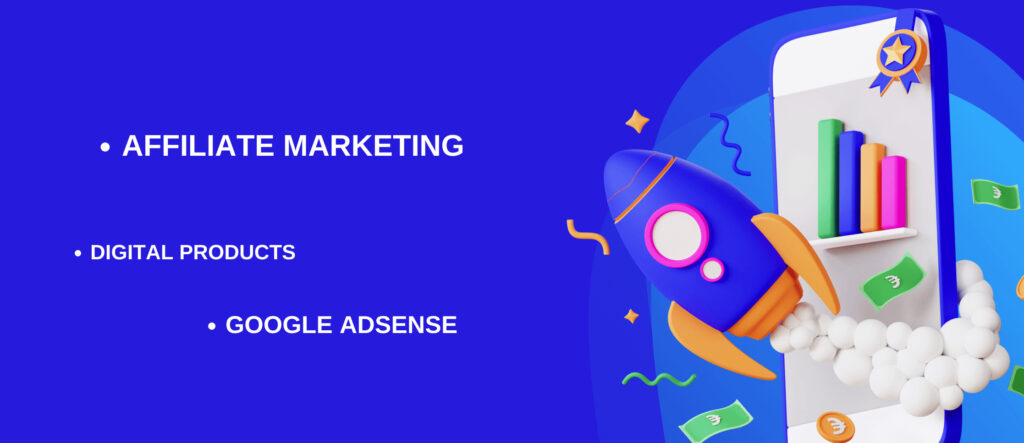
There are a variety of ways to monetize a WordPress blog, from selling products and services to displaying ads and partnering with affiliate programs.
The key is to find the methods that work best for your blog and your audience, while also providing value and maintaining the integrity of your content.
Some popular ways to monetize a WordPress blog include:
- Partnering with affiliate programs to earn commissions on product and service recommendations.
- Selling digital products, such as eBooks, courses, or memberships.
- Offering services, such as coaching or consulting.
- Displaying ads through ad networks, such as Google AdSense.
- Creating sponsored content or sponsored posts for brands that align with your blog’s niche.
Before monetizing your blog, it’s important to build a loyal following and establish your credibility as a trusted source of information.

In addition to affiliate marketing, website owners on WordPress can explore sponsored content collaborations with brands relevant to their niche. These partnerships offer a direct revenue stream while maintaining authenticity and relevance for their audience.
Setting Up A Monetization Strategy
The first step in monetizing a WordPress blog is to set up a monetization strategy.
This involves identifying the target audience, determining the most effective monetization methods, and setting clear goals and objectives.
One of the most important aspects of setting up a monetization strategy is tracking conversions.
This will help you to understand which monetization methods are working and which ones are not, so you can make adjustments as needed.
One of the most effective monetization methods for a WordPress blog is affiliate marketing.
Affiliate marketing involves partnering with other businesses to promote their products or services in exchange for a commission. This can be a great way to increase revenue without having to create your products or services.
One of the advantages of using affiliate marketing networks like Awin, Impact, CJ, and more is that they provide a wide range of products and services to promote, and they also handle all of the tracking and payments for you.
Additionally, you can easily connect your affiliate networks with third-party software like wecantrack and you can track, attribute, and integrate all your affiliate sales into the marketing tools you use.
WordPress Blogs And Buying Guides
Buying guides can be a great way to monetize your blog and provide value to your audience. This can lead to increased traffic and higher conversion rates.
When creating buying guides, it’s important to conduct thorough research on the products you’re going to include. This includes looking at customer reviews, researching the features and benefits of each product, and comparing prices.
Once you have a good understanding of the products, you can then select the best options to include in your guide.
When creating the buying guide, it’s important to structure it in a way that is easy to read and understand. This includes using clear headings and subheadings, providing product images and videos, and including links to the products.
Additionally, you can add some personal recommendations and opinions, that can help you to build trust with your audience.
Affiliate marketing partnerships with brands can be a great way to monetize your buying guides. This can be a great way to increase revenue without having to create your products or services.
To identify potential brand partners, you can start by researching the products you’ve included in your buying guide. Look for brands that have a good reputation and a track record of producing high-quality products.
Once you have identified potential partners, you can then reach out to them and propose a partnership.
When negotiating an affiliate marketing partnership, it’s important to be transparent about your expectations and to make sure that the partnership is mutually beneficial. You should also establish clear guidelines for communication, reporting, and payment.
Make sure to conduct thorough research, create informative and well-structured guides, and establish mutually beneficial partnerships with reputable brands.
Driving Traffic And Optimizing Conversions
Once you have set up a monetization strategy, the next step is to drive traffic to your blog and optimize conversions.
Several tactics can be used to drive traffic, such as search engine optimization (SEO), social media marketing, and content marketing. You can also have a quick look at our article on the top free traffic sources for affiliate marketing.
Search engine optimization (SEO) involves optimizing your blog’s content and structure to improve its visibility in search engine results pages (SERPs).
This can be done by using keywords in your blog’s title, meta tags, and content, as well as by building backlinks to your blog.
Social media marketing involves using social media platforms to promote your blog and drive traffic to it. This can be done by creating and sharing engaging content on social media, as well as by running social media advertising campaigns.
Content marketing involves creating valuable and informative content that will attract and engage your target audience. This can be done by writing blog posts, creating infographics, and producing videos.
In addition to driving traffic to your blog, it is also important to optimize conversions. This can be done by providing clear calls-to-action (CTAs) throughout your blog, such as “Buy Now” or “Sign Up.”
Another important aspect of optimizing conversions is to install good affiliate conversion software that will help you track the source of your conversions.
Utilizing WordPress Plugins
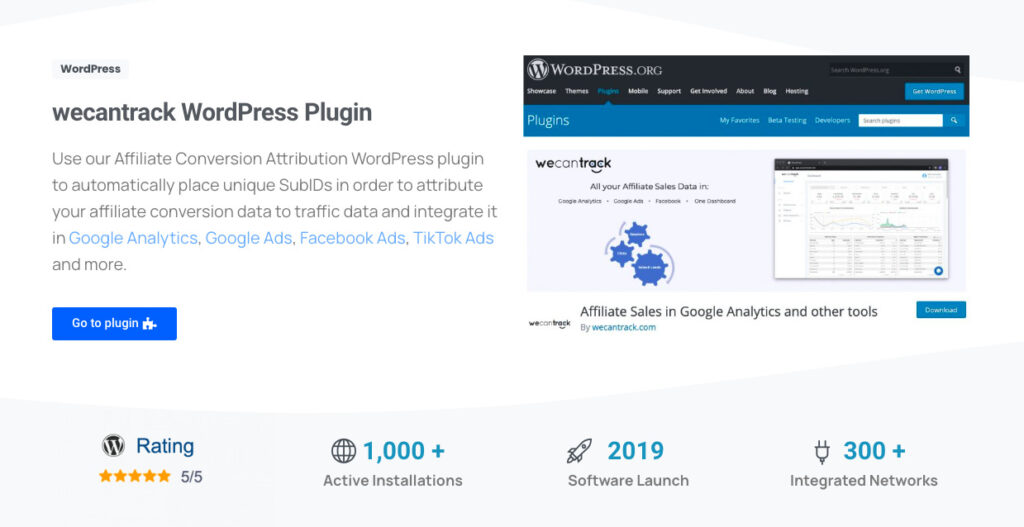
Another way to increase revenue from a WordPress blog is by utilizing WordPress plugins.
These plugins can be used to add monetization features to your blog, such as advertising, affiliate marketing, and e-commerce. Some popular WordPress monetization plugins include:
- wecantrack plugin: By using the wecantrack plugin you can track sessions and clicks on all your affiliate links and match the traffic data with the conversion data from the affiliate networks.
- AdSense: Allows you to display ads on your blog and earn revenue from clicks or impressions.
- Amazon Associates: Allows you to promote and earn commissions from Amazon products.
- Easy Digital Downloads: Allows you to sell digital products such as e-books, music, and software directly from your blog.
- WooCommerce: Allows you to create an online store on your blog and sell physical products or promote affiliate products.
When using WordPress plugins to monetize your blog, it is important to optimize the settings for maximum revenue.
This includes selecting the right ad sizes and placements, setting up affiliate tracking codes, and configuring e-commerce settings.
Additionally, it is important to regularly update and test the plugins to ensure that they are functioning properly.
Affiliate Conversion Tracking For WordPress Blogs
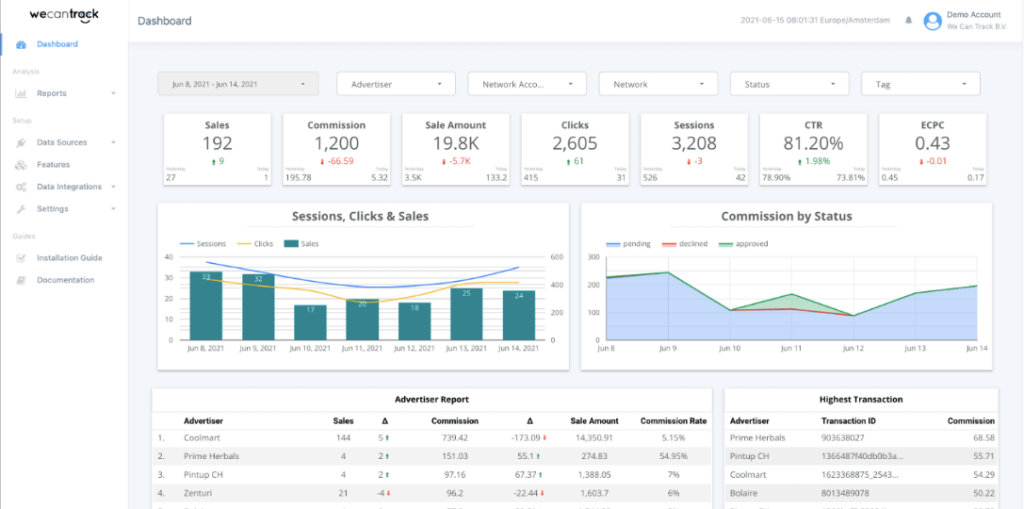
Tracking and attribution of affiliate marketing efforts on WordPress blogs is a crucial aspect for any business looking to scale up its marketing efforts.
One way to achieve this is through the use of affiliate conversion tracking and attribution provided by a third-party service like wecantrack.
This is done by automatically tracking every time a user clicks on one of the affiliate links on the blog.
A unique click ID is placed every time a click happens, with that ID, once the sale is fetched from the affiliate network the system can automatically attribute and track the sale to the correct session and user.
This data can then be integrated into a variety of tools such as Google Analytics, Google Ads, Facebook Ads, and more.
Furthermore, you can use this data to optimize your affiliate marketing campaigns by testing different post formats, layouts, and creatives, to know which one of them is the most converting, this can help you to get even more revenue from the same traffic.
Examples Of Successful Affiliate Blogs
Affiliate marketing can be a lucrative way to monetize a WordPress blog. Here are some successful examples of affiliate WordPress blogs, ranging from personal finance and product reviews to food and lifestyle niches:
SmartPassiveIncome.com (SPI)
Pat Flynn is known as a super affiliate, and SPI is a great example of a successful affiliate marketing blog. He generates most of his income through affiliate marketing and offers his readers insights into how he does it.
He started Smart Passive Income (SPI) in October 2008 as a personal blog after he lost his job at the architectural firm he was working for due to the 2008 economic crisis.
He decided then to focus all his attention on online marketing, and as his blog grew, he hired people to work with him.
Pat no longer publishes monthly income reports as he feels:
1. They were becoming less and less relatable.
2. They took over eight hours to publish.
3. They were becoming less valuable to readers. (most important)
However, in his last monthly income report, he reported gross earnings of $105,619.13 from affiliate marketing. His other income streams included book sales, course sales, niche sites, podcast sponsorships, and software and apps.
His goal was to diversify his earnings and earn ~50% of his income from affiliate marketing and ~50% from other sources, including his products.
NerdWallet.com
This personal finance blog offers unbiased reviews and comparisons of financial products, such as credit cards and insurance policies. They earn commissions through affiliate partnerships with the companies they review.
Tim Chen lost his job at the hedge fund he was working for in 2008 due to the financial crisis. While researching credit cards with lower foreign transaction fees on Google, he realized that most information on the internet was marketing or promotional content.
It gave him the idea to create a site where consumers could make decisions by comparing products, such as credit cards.
Tim founded NerdWallet in 2009 with $800 and only made $75 in the site’s first year. Things started improving in 2010 when co-founder Jake Gibson joined the business.
Over the following ten years, NerdWallet grew significantly and was listed on the Nasdaq Exchange on November 4, 2021, using the ticker symbol NRDS.
Today the company has a market capitalization exceeding $800 million. And according to Similarweb, the site gets more than 30 million monthly visits.
Wirecutter (formerly The Wirecutter)
Wirecutter is a product review site owned by The New York Times. It has a team of experts who investigate, test, and evaluate numerous products.
Based on this, Wirecutter recommends the most suitable option for each specific task. They earn commissions through affiliate partnerships with e-commerce platforms like Amazon.
Between 2011 and 2016, Wirecutter generated about $150 million in affiliate revenue and was acquired by the New York Times in 2016 for a reported $30 million.
PinchOfYum.com
This food blog features recipes, food photography tips, and kitchen equipment reviews – earning commissions through affiliate partnerships with companies that sell cooking and baking products, such as Amazon.com.

"What started as a casual hobby over ten years ago in 2010 while I was working as a fourth-grade teacher has now grown into a full-blown business that reaches millions of people."
Lindsay Ostrom
Lindsay has not published an income report in many years. However, in her last monthly income report, her earnings exceeded $95,000 – It includes:
- $52,313.13 from ads (AdThrive)
- $22,400 from sponsored content
- $5,175 from Bluehost (affiliate program)
- $4,753.49 from Amazon Associates
Her website traffic figures were as follows: 3,218,994 sessions and 4,245,565 page views. And her main traffic sources were:
- Google (organic): 47.49%
- Pinterest: 17.78%
- (Direct traffic was 15.94%)
In addition to the above, Lindsay has worked hard to expand her social media reach. At the time of writing, she has:
- 1.1 million Pinterest followers and 10 million monthly views
- 413K followers on Facebook
- 1.2 million followers on Instagram
- 52.5K YouTube subscribers
Just a Girl and Her Blog
This lifestyle blog covers the home organization and decorating topics, earning commissions through affiliate partnerships with companies that sell home organization products, furniture, and decor.

"I have spent years and years learning and creating systems and habits that have helped us stay organized for good."
Abby Lawson
Abby started her blog on a whim in 2013 and instantly fell in love with blogging. And by December 2016 (her last income report), she was earning $41,700 – $14,193 from product sales and $27,507 from affiliate marketing, getting between 400,000 and 500,000 pageviews monthly.
Her #1 traffic source is Google, followed by Pinterest.
Abby’s best blogging tips for a new blogger are:
1. Start building your email list from day 1.
2. Build relationships with other bloggers in your niche.
3. Put in the necessary work every day to get better.
Final Thoughts
Monetizing a WordPress blog is essential for businesses that want to turn their online presence into a profitable venture.
The key to success is setting up a monetization strategy, driving traffic, optimizing conversions, and utilizing WordPress plugins.
Remember to always track and analyze your performance, test different monetization methods, and optimize for mobile devices, to make sure you are getting the best results from your campaigns.

